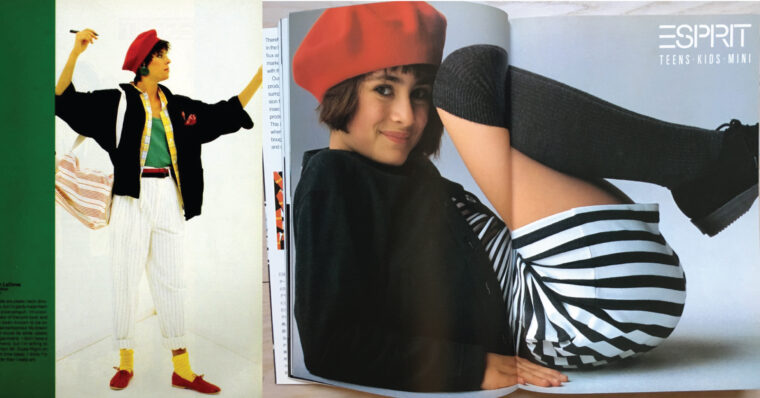You know those pieces we all refer to as classic? Items like a button-down shirt, bluejeans, menswear trousers, and trench coat? I’ll tell you a little secret: Even the silhouette of those styles changes over time. That blazer that every fashion expert recommends you have at least one in your wardrobe? While five years ago that style was a little shrunken and fitted, now it’s oversized and loose and even a little floppy.
What’s a sewist to do? How do you keep up with fashion changes and not feel like you need to ditch your entire wardrobe every couple of years? Is it possible to keep wearing the same clothing without looking out of touch with fashion?
Here’s what I think. Keeping completely up-to-date with fashion trends doesn’t give you much of an opportunity to develop your own style. If you’re always making and wearing the latest looks as they’re seen in the shops or on the runway or on your favorite influencer you’ll just look like a trend follower, not like you have a style of your own. Wearing the latest looks also wastes a lot of time, energy, and fabric, since you’ll be constantly chasing the latest trend instead of wearing and re-mixing items you already own.
However, not staying aware of fashion trends at all will probably mean that eventually you will look a little frumpy and out of touch. Silhouettes change. It’s inevitable. Just as our eye changes, tastes change, and if you’re still wearing all the same silhouettes you were wearing 5 or 10 years ago you’re probably going to look a little dated and stale.
The key to developing a personal style and to looking stylish is to pay attention to the trends and use them to influence your style while staying true to your personal tastes and keeping some of the classic items you love. Think timeless instead of trendy. To have your own style you’ll need to mix things up a bit: keep a bit of the old mixed with the new, and do it in a way that’s unique to you rather than an imitation of what someone (or everyone) else is wearing.
Example: I love blazers. Love them. I wear them over dresses, jeans, trousers, skirts, with button-down shirts, T-shirts, heels, and sneakers. And I’m absolutely not interested in the current oversized blazers. I lived that style in the 90’s and have no desire to go back. More fitted blazers are very much more my thing. So I’ll continue to wear my more fitted blazers, but now I’m pairing them with wide-legged trousers, which are also my thing, so I’m really happy they’re back! The updated trousers demonstrate that I’m paying attention, that I’ve left the skinny jeans behind (I was never really able to do skinny jeans anyway, unfortunately), but the more fitted blazers allow me to keep my personal style intact. Plus, they balance those wide trousers! If I really want the oversized silhouette of the current blazer I’ll reach for a pea coat or another jacket, but I’m not planning to update my blazer collection. It suits me even if it’s not trendy. As long as I style it correctly it will suit me.
What about button-down shirts? Personally I like to keep them on the not-too-fitted side but still a little loose. That way I can play with proportion if I want to wear them blouse-y and loose, but they can also be tucked in and restrained a bit. If I want to do a more oversized shirt I’ll sew one of our Classic Shirts in a larger size (a bit like shopping in the menswear section or borrowing from your boyfriend/husband) or I’ll sew our Gallery Tunic, which also has a slightly oversized feeling to it.
Another trick is to nod to the trend without fully embracing it. Our Hollywood Trousers and Cannes Trousers have wider legs, but they haven’t fully embraced the baggy, oversized look that’s currently in vogue. So with both styles I can get the feeling of the trend fully embracing it: think Katherine Hepburn’s higher-waisted trousers rather than big and baggy. Hepburn’s trousers could be considered mostly timeless, although sometimes they’re not so trendy.
Think of your clothing, of the styles you choose to sew and wear, in terms of something you can wear for a long time rather than chasing the latest style. That means you’ll never need to toss your entire closet to chase the latest trend, but you’ll also be always looking for updates, individual pieces you can add or change slowly, over time. Style changes, and your personal style should always be changing a bit also.
And that’s what Slow Fashion means, too. Shop, and sew, with an eye for the years to come and how your clothing can reflect your own personality.
(I’m illustrating this post with photos of Esprit ads from the 1980’s and 1990’s to show that good style can still be relevant and contemporary many years later. Not everything, obviously, but if you shop and sew with care you’ll have a wardrobe that you can draw from for a long time. That’s timeless, and also classic.)

